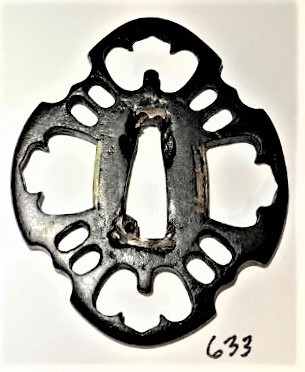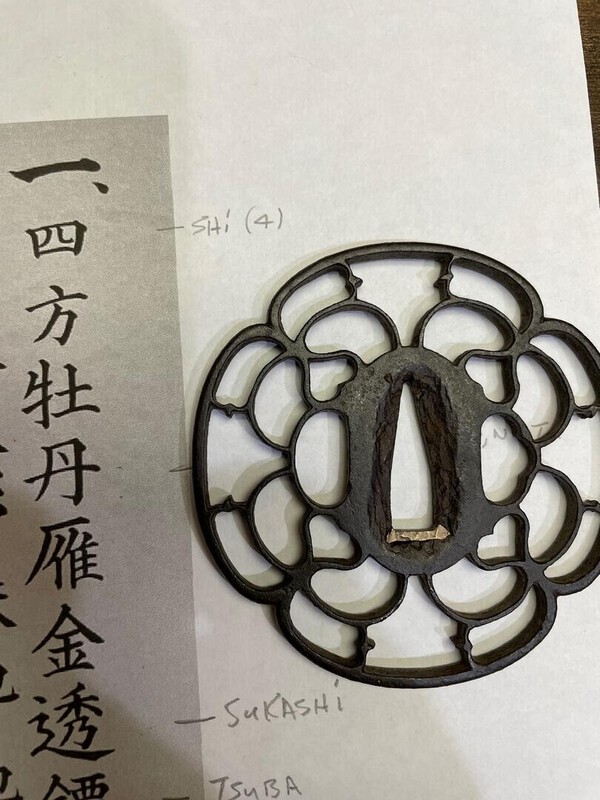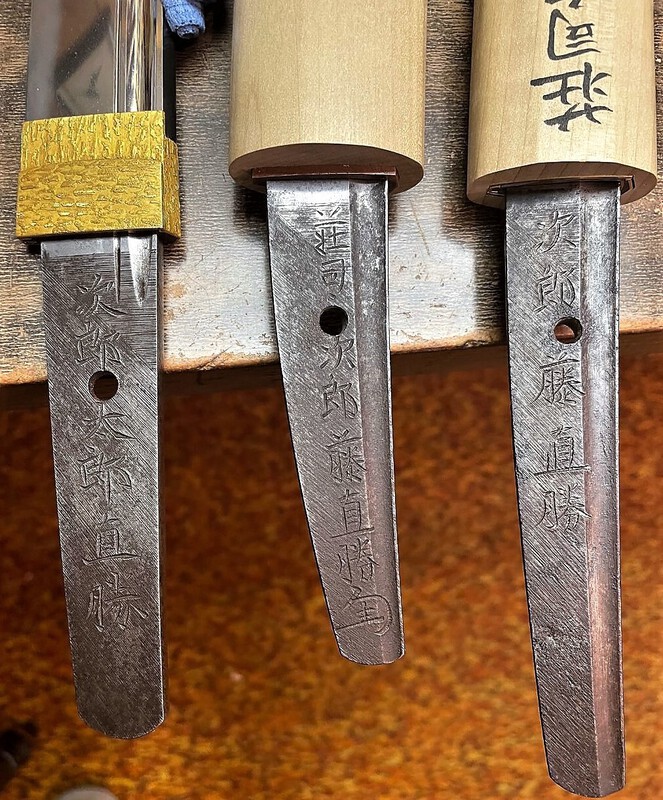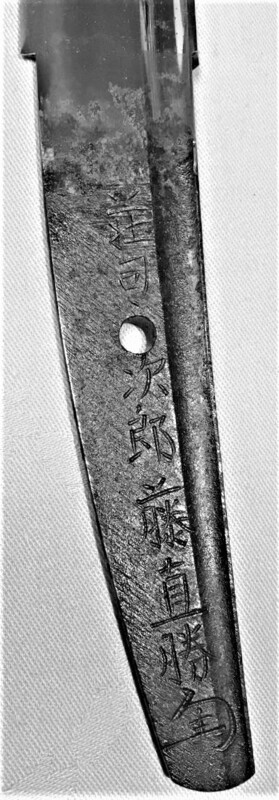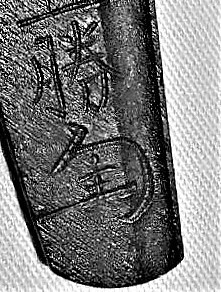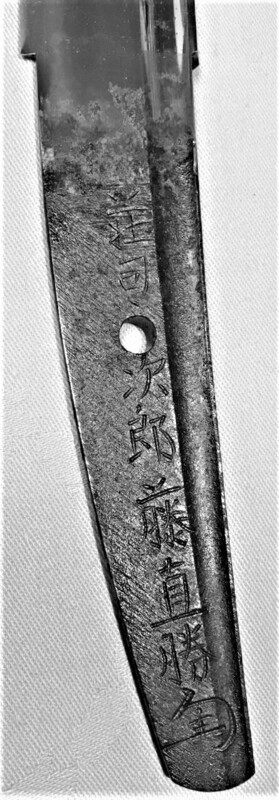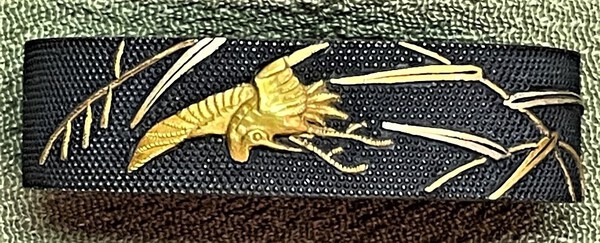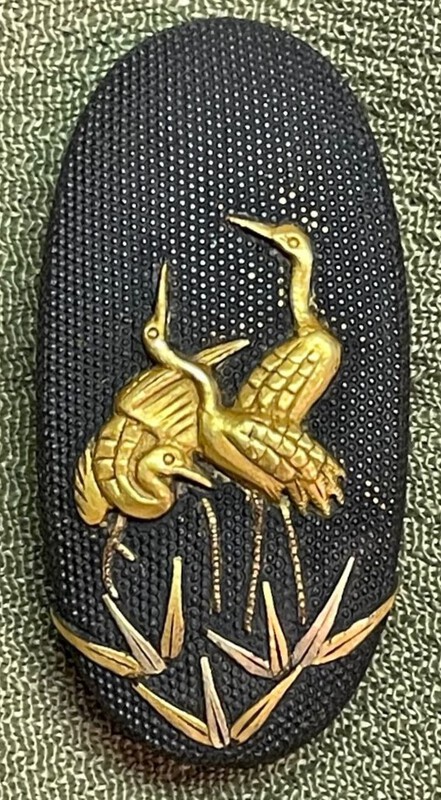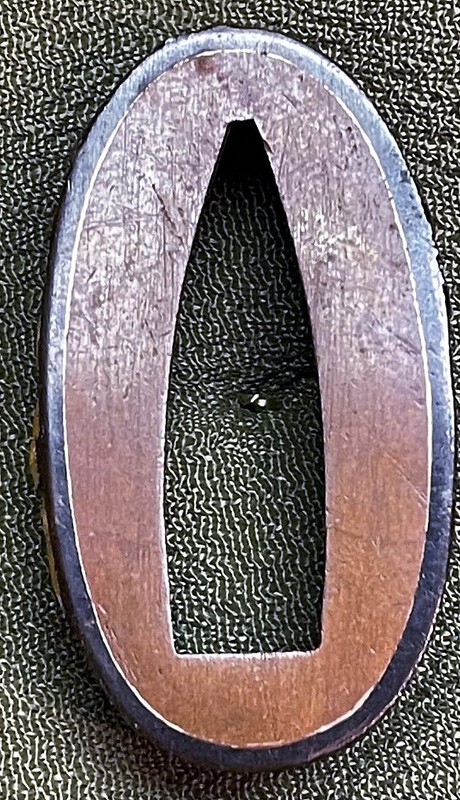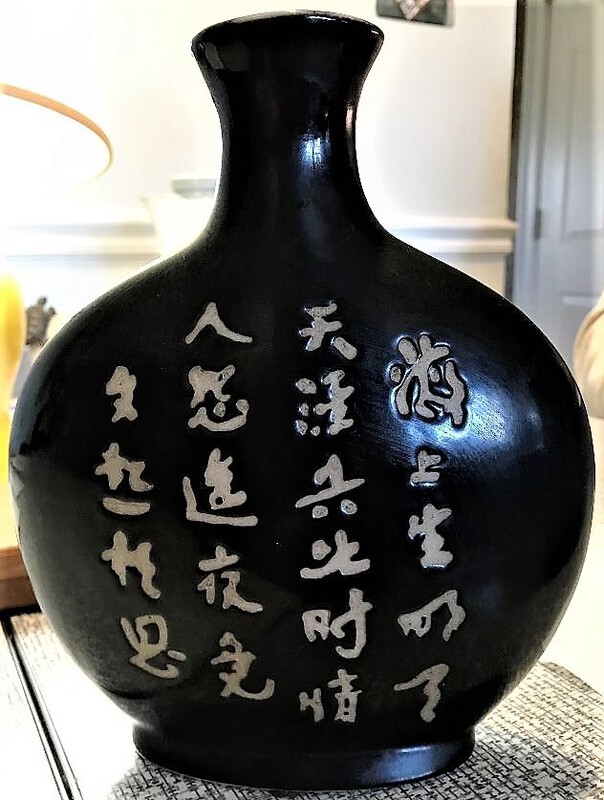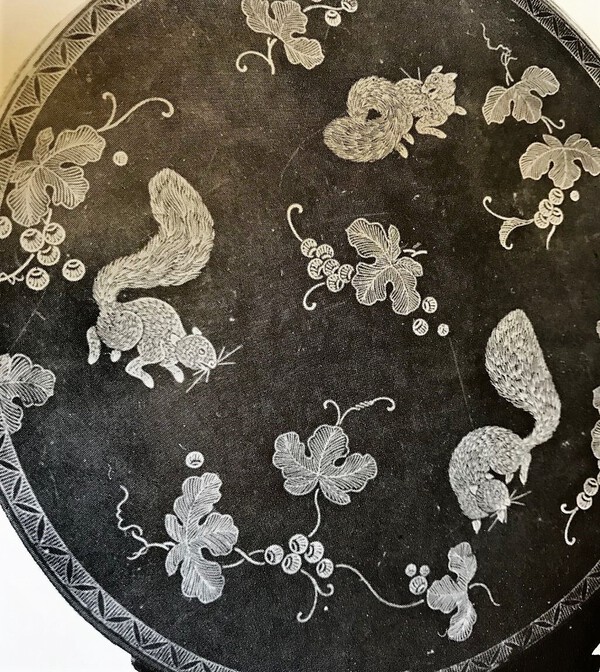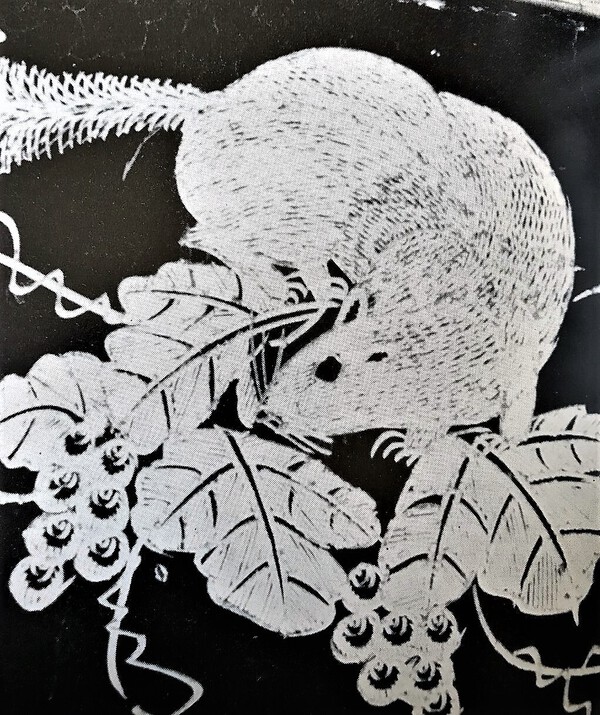-
Posts
703 -
Joined
-
Last visited
-
Days Won
4
Everything posted by Ron STL
-

Help on finalizing three tsuba descriptions
Ron STL replied to Ron STL's topic in Translation Assistance
Strange, I thought I replied to all this translation help yesterday, but it didn't go out. Yes, this information was very helpful and beyond my translation abilities. I was confused by the term "Mon chirashi zu tsuba" but now realize it is as it looks, a scattered, random pattern applied by what I heard is a "drip zogan" method, which is how it looks. Replying to Piers D, I'm in St. Louis, Missouri USA. Been into swords and fittings for sixty years and still learning something new, like here. Ron STL -

Help on finalizing three tsuba descriptions
Ron STL replied to Ron STL's topic in Translation Assistance
Okay, on tsuba 1 reads: mon chirashi zu tsuba. What does this mean? Ron STL -

Help on finalizing three tsuba descriptions
Ron STL replied to Ron STL's topic in Translation Assistance
Thanks guys for the translations, this is very helpful to me to identify these sometimes hard to find kanji. It is always interesting to compare what "I" see in a tsuba as opposed to what the shinsa judge(s) see and describe. A 4th tsuba sent to shinsa came back as "no judgement" which was a little disappointing, but understanding perhaps. It is a strange iron tsuba in it's original shape. Friends agree it is unusual, but studying it, it has been used and preserved for many centuries judging from what it shows. I've posted this before on here resulting in more head-scratching" comments. Will picture it again here. I enjoy wondering about it. Thanks again, Ron STL -
Been trying hard to complete a translation of three tsuba recently put through shinsa. The attached three photos show the tsuba and what I am unable to translate. Help please. Puzzling why I could not find these sometimes simple kanji. Tsuba 1 Right column top unidentified kanji. Tsuba 2 Right column top, left column top. Tsuba 3 Right column top; left column bottom. RonSTl
-
Been trying hard to complete a translation of three tsuba recently put through shinsa. The attached three photos show the tsuba and what I am unable to translate. Help please. Puzzling why I could not find these sometimes simple kanji. Tsuba 1 Right column top unidentified kanji. Tsuba 2 Right column top, left column top. Tsuba 3 Right column top; left column bottom. RonSTl
-
This is not so much a question but rather a favor to ask. The NBTHK public exhibit of newly designated Juyo Token is presently going on in Japan. I am thrilled that my sword is in the exhibit, #3 on the display list of 34 swords, Taima Cho Aritoshi mumei daito. If any NMB members in Japan are planning on visiting the exhibition, would they be so kind as to take a few pictures of my sword for me? I'm sure several pictures of the overall exhibit would also be welcomed, not only by me but by others on NMB. I thought this a good place to ask this favor. Thanks in advance. Ron STL
-
- 4
-

-
Thanks for "Washu" explanation. I have another Juyo Taima (from Byron Shimizu) but that didn't carry this on sayagaki. Ron STL
-
The research information tallied so clearly is fascinating, Jussi. This file is something I not only have such complete access to, but would never have the diligence and patience to so clearly explain it. Also the Juyo Token information that John has share is also great material that gives me more understanding of what to expect in a sword by Cho Aritoshi. Reading the translation you have provided I can understand just what wonderful hataraki to expect in his work. My initial record sheet for the sword does reveal many of this strong activity mention. I always write down what I see in hamon and jigane of a sword even if it can not at the time connected to a specific maker. All part of the learning process. Interestingly enough, when Arnold bought the sword it has an old NBTHK Tokubetsu Keicho origami to "sue Shikkake" which Arnold never had much faith in. Then in during a 2014 Tampa show I submitted it to an NTHK (NPO) shinsa. That brought a "den Tagai Kanenaga" call. Shinsa boil down to opinions, but I'm never satisfied until Tanobe has a chance to give his opinion. Attached is the Cho Aritoshi sayagaki by Tanobe. I am not sure what the first two kanji read before the name but I don't this it relates to "den." Again, thank everyone. Ron STL
-
I'm so impressed by Jussi's tally of inforation, quite and undertaking it would seem. It puzzles me somewhat if there was one Cho Aritoshi or and Aritoshi followed by Cho. This sword was the late Arnold Frenels 8th sword he ever owned. I acquired it in trade for a wonderful Naginata by Horikawa Kunimichi naginata. Arnold had faith in this sword so Juyo status confirms his optimism. I enjoy keeping the "history" of recent background of swords like this and how they are recognized and given their proper recognition. Again, I hope perhaps there is a Zufu translation available or Tanobe sayagaki translated. We shall see... I have the NBThK listing (now outdated) of Juyo swords. Would this be listed under Yamato Taima swords? I may have some of these Zufu here that include Cho Aritoshi Juyo blade. Wish I could be fluent in Japanese...don't we all. Ron STL
-
This week I was happy to receive news that my mumei Yamato Taima daito attributed to Cho Aritoshi made Juyo. It will be awhile before I see the sword again, a good time to find more info on Cho Aritoshi. I've found the basic linage on data on him, but I hope to find out what pointed to him specifically. Mr. Tanobe wrote an extensive (covering entire shirasaya) prior to shinsa. This will eventually be translated to reveal this info (hopefully). Also the Juyo description will hold answer but that comes in the future. meanwhile, I wonder 1) how many Juyo Token have been attributed to Cho Aritoshi; 2) available, what was said about him on the Zufo description; 3) one past topic was from a member who had a TokuHo with sayagaki to Cho Aritoshi. Has that been translated? This is the fun part, to learn as much as possible about this wonderful sword. Thanks in advance. Ron STL
- 13 replies
-
- 12
-

-

-

-

Puzzled by this Nobu.... (maybe not Nobu) mei
Ron STL replied to Ron STL's topic in Translation Assistance
Clear as clear can be! A bit embarrassed not to realize this. Not sure what threw me off on this. Ron STL -
This mei was examined this week but it remains a puzzle to me. At first look it seemed Nobu(something). Searching names today I realized the Nobu has an extra stroke at the top, so perhaps it is another kanji I'm unfamiliar with. The second kanji to the name could never be found. Nice clearly carved mei that, because of Shinshinto looking yasurime (full dress) I must think this is a shinshinto smith. Can anybody confirm the name of this smith? Much appreciated folks. Ron STL
-
This afternoon I sat alone with my swords to take a long look at the Naokatsu under discussion, with an eye that it may be a gimei sword as Tom mentioned. I soon could see two kanji that were totally unlike any I could see in the Taikan, ect. These were how JI and Ro (Jiro). "JI" was typically carved quite different than was was seen on this sword. Same with "RO" where the center vertical stroke is carved long and past the bottom of the character. This was discouraging to realize, but them I set out two other authenticated Naokatsu dated close to this sword. I took a picture (attached) of these. From left, on the first sword (dated 1840), ji and ro kanji are as seen in the books. Middle sword, dated 1831, is the one under discussion. The third sword, dated 1830, surprised me. The Jiro kanji are written exactly as seen on the sword we are discussing. I thought this was so interesting and reinforces my confidence in the sword. Of course that pesty kao/kanji will await Mr. Tanobe's comments. Tom, let me know if this "Jiro" was what you saw strange or if there was more. It's all just part of our learning process. Ron STL
-
Okay, a few shots of the sword sugata and hamon. Not the best, but you can get an idea of what's going on here. Ron STL
-
Tom, I hope you're wrong on this being gimei (naturally), but after all these years with Naokaatsu a poor judgement could very well strike my aging brain. The mei (your 2nd example) is probably from Fujishiro's Shinshinto Shinto shu, p. 150. I unfortunately sold my copy many years ago (didn't like the print quality) but should get a copy. I discussed an earlier "early dated" Naokatsu with Cary Condell years ago. Cary pointed out the variations of mei by date taken from this book. I did very carefully go over the mei on my new sword very carefully before buying it (came out of UK, a non-collector). The only thing I questioned was that kao/kanji thingee. Now that I have this back in-hand from polish, reading your thoughts here, I really need to spend some quiet time with it, soon. The hamon and jiba will show me little details expected in Jirotaro's work. If I screwed up, I'm embarrassed to do so. I should no better. I'll hopefully find out soon. I've asked Robert Hughs to show this to Tanobe next visit, possibly this month. I'll of course share this afterwards. Guys were asking, so I'll attach the full nakago this posting. Yes, it does carry a special order inscription. If I can get a could shots of the full blade, I'll post those, too. At least we may all learn something from this Jirotaro Naokatsu either way. Ron
-
Appreciate your thoughts but maybe somebody will come up with it. Always difficult when we non-Japanese to figure out unusual kanji. I thought too, it was a bit unusual for a kao. I wouldn't be surprised it it turns out to mean "saku" or "sakuru" and for some reason, just a unique kanji. Likely Naokatsu had something in mind when carving this character. The enigma continue to be a puzzler. Ron STL
-
I'll see how a few photos turn out, if clear I'll post it. This is a handsome hirazukuri wakizashi, relatively thick (6.4 mm) that came out of UK and passed on to me. It is a very powerful wakizashi like almost all of Naokatsu's work, Has special order on it which always appeals to me. I have several Jirotaro swords plus Yamons works, plus tsuba made by them and followers. This is why this odd "kao" fascinates me, have never seen a kao associated with Naokatsu before. Ron STL
-
My apologies if I've already asked about this mystery "kao" that was used on this shodai Naokatsu wakizashi, but if so, I can't locate the post. This wakizashi just returned from polish, so I'm enjoying updated what I see in the sword now that it's restored. This in turn reminded me of the very unusal "kao" that follows the signature of Naokatsu. I am quite familiar with Naokatsu' den but have never come across this kao being used before. I thought it was worth a few key strokes to check if anyone ever has see seen this kao before. This is a special order wakizashi, but I do not think that has anything to do with the use of this kao. If this fails, I may try to get a response from the NBTHK, but that's a longshot. I've found very few people who get into Naokatsu here or anywhere, but who knows.
-
Thanks John, everyone. I did mention "kyo-kinko" and "Mito" based on some recent shinsa opinions of fittings, but never felt confident to declare that on this set. John, I did come across something that did indeed mention Ishiguro school but again, enough to declare that. To explain this, I'm selecting several items to place in our 2023 KTK catalog, and I often try too hard to describe "unauthenticated" items. I take it too serious, a fault of mine. Everything gets edited anyway, before publication. I have loved this set plus I have some gold flying cranes that go well with them. Meanwhile, I'll check what I found earlier on Ishiguru as a possibility. Thanks guys. Ron STL
-
Hello I was surprised not to read some comments on this set and thought I'd double-check again. If no thoughts, I'll make a stab at this and be done. Ron STL
-
Here you see a very nice mumie f/k depicting cranes on shakudo, nanako ji. The shakudo and gold have rich color. Nanako is well made but fairly large size. I've never put these through shinsa. I can see a "kyo-kinko" call on these or possibly "Mito," but there are other more specific calls out there, too. Just looking for a few knowledgeable opinions. Thank guys and gals. Ron STL
-

Interesting ceramic inscriptiion, if allowed...
Ron STL replied to Ron STL's topic in Translation Assistance
Morita san, thank you for the explanation. I'll pass this on my friend. Ron STL -
While this is not sword or tosogu relate it might not be allowed to post, and I understand if so. I just thought it would be of interest, possibly an award or possibly just decorative. Seals are in Tensho seal script. Seems quality work, inside has white slip. Ron STL
-
This has been quite interesting, to see what ideas were brought out regarding the critter. Thinking about those spots punched into the menuki, they are kind of randomly placed. As was mentioned, this might just be the artistic liberty that was mentioned. This really makes me think weasel, primarily based on it eating a fish (if that is interpreted correctly). All in all, these are rather unique menuki made almost five centuries ago. I always found it amazing that two such small items (menuki) can remain together for centuries. Only in Japan!
-
Thanks for the interesting comments. I should have mentioned, these menuki are indeed yamagani. Dale's idea that this might depict a palm civet is interesting, considering the punched "spots" on the menuki. As for the critter eating a fish or that this what we see are a depiction of whiskers on a squirrel, I had to look further into that thought. I have a book, one of a series of Japanese Art, that Peter Bleed gave me, on the history of the grapes and squirrel motif that goes back to ancient Greece. I could find only a few illustrations showing squirrels with whiskers, and those are definitely coming from the "cheeks." Most depictions do not show whiskers. Looking again at my menuki I'm hard to see "whiskers" but more likely a fish in the critters mouth. One the close-up I posted you can see the fish being held in the front of the critters mouth. I must agree with Tom about not being Ezo although I'm still puzzled by the silver/gold coloration on the backs. I don't think that resulted from aging yamagani. As Tom put it, the NBTHK would likely leave their opion at "ko-kinko" work. I just find it so interesting to try and understand these somewhat abstract, unrefined-looking early menuki and tsuba. Maybe more thoughts and opinions can be offered here? All help to improve our insight into these things. Ron STL


